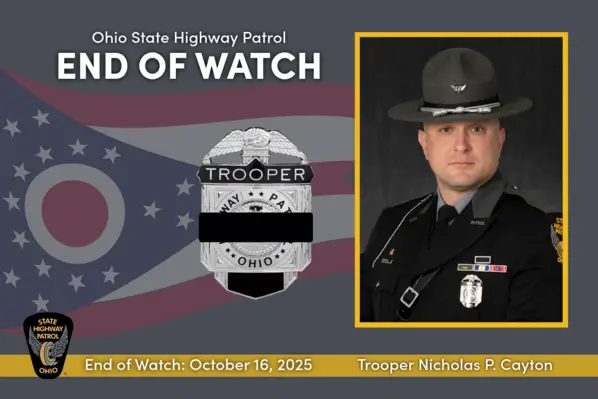



PRYING EYES OF LEXINGTON PARK NEWS PHOTOGRAPHER AYE YUNG CITY SHUT DOWN DRONE TRAINING BY ST. MARY’S SHERIFF
BY KEN ROSSIGNOL
THE CHESAPEAKE TODAY
LEXINGTON PARK, MD. – The St. Mary’s Sheriff’s Department recently held a training session for a squad of deputies at the Fort Apache LP City, otherwise identified as the Sheriff’s Lexington Park District Office on Great Mills Road.
Ironically, the area where the deputies were training is located in a highly sensitive flight path area for jets taking off and landing at the Patuxent River Naval Air Station and within the AICUZ zone.
When the training session was set up in the back parking lot of the Sheriff’s station, featuring about a half dozen drones and about a dozen deputies, the scene was filmed by Javon Henderson, who boasts 58,000 subscribers on YouTube under the moniker Aye Yung City. Henderson was previously featured in THE CHESAPEAKE TODAY in an interview about his unique First Amendment audit videography.
Henderson approached the Sheriff’s station parking lot on foot, while filming, showing the rare time that a side parking lot is filled with police vehicles. As Henderson walked around the building to a loading dock, he stood up and began videoing for about five minutes before one of the ‘bald-headed’ deputies took notice and one of them told him he couldn’t video, where Henderson shot back to them to ‘get a taller fence’.
With Henderson continuing to video, the deputies packed up their drones, folded up their tables, and ceased their rogue training session.
Is it legal for the St. Mary’s Sheriff’s Department to launch a drone from their station on Great Mills Road? Not unless they contact the Navy first, according to the following instructions from the Naval District Washington website:
PAX Drone Operations
To ensure the safety and security of our base assets and personnel, drone operations within a five-mile radius of any airfield facilities and a three-mile radius of their Outlying Landing Fields must be coordinated with the base’s air operations department. For more information on where drone operations are approved you can refer to the individual installation instructions and the Federal Aviation Administration’s webpage at www.faa.gov/.
To coordinate approval for safely operating a personal or commercial drone near NAS Patuxent River, contact the NAS Patuxent River UAS Airspace Coordinator AC1 Haas/AC2 Stricko at naspaxuascoordinator@us.navy.mil
From Police Chief Magazine:
Best Practices for Mitigating Risks
- To ensure the safety of communities and the effectiveness of DFR programs, law enforcement agencies are wise to adopt a proactive approach to C-UAS concerns. Best practices include the following:
- Collaboration with Federal and Private Entities: Partnering with federal agencies, such as the FAA, the Federal Bureau of Investigation (FBI), and the DHS (or their counterparts in an agency’s home country), can provide access to resources, training, and advanced technologies. Collaboration with private industry can also drive innovation and cost-effective solutions.
- Integration of C-UAS into Emergency Response Plans: Incorporate C-UAS protocols into standard operating procedures for DFR deployments and large-scale public events. Establish standards for personnel trained to respond effectively to rogue drone incidents.
- Community Awareness and Engagement: Educate the community about the risks associated with unauthorized drone use and encourage reporting of suspicious activity. Community support serves as an additional layer of surveillance and deterrence.
- Investment in Research and Training: Allocate resources to study emerging threats, establish standards, and train personnel in the use of C-UAS systems. Simulated exercises can help identify gaps in current capabilities and prepare teams for escalating real-world scenarios.
- Advocacy for Policy Reform: Police leaders serve as a strong voice of advocacy for legislative changes that address regulatory barriers to C-UAS deployment. Support for policymakers’ continued consideration of the unique security needs of DFR programs and police operations when crafting drone-related regulations is a priority.
Federal rules on Drones
1. Federal Aviation Administration (FAA) Requirements
Part 107 Remote Pilot Certification: This is the foundational requirement for individuals operating drones for commercial or governmental purposes. Pilots must pass a knowledge test covering airspace, weather, operations, and safety procedures. FAA guidelines and regulations stipulate that anyone flying a drone in the US National Airspace System is responsible for flying within them.
Certificate of Authorization (COA): For public safety agencies needing more operational flexibility (e.g., flying at night or beyond visual line of sight), a COA from the FAA allows operations under specific conditions tailored to their needs.
2. Training program components
Police drone training programs generally include both theoretical and practical components.
FAA Part 107 Prep: Includes study materials, practice tests, and ground school training to prepare officers for the FAA Part 107 knowledge test.
Hands-on Flight Training: Practical experience in operating the drone, including basic maneuvers, advanced flight techniques, emergency procedures, and simulated mission scenarios (e.g., search and rescue, crime scene mapping, tactical operations support).
Specialized Training: Depending on the agency’s needs, training may cover areas like:
- Advanced flight techniques
- Tactical surveillance
- Search and rescue operations
- Crime scene analysis
- Data collection and evidence gathering
- Privacy and legal considerations
NIST Standards: Some agencies and training programs incorporate the National Institute of Standards and Technology (NIST) UAS Standard Test Methods to evaluate pilot proficiency and program effectiveness.
3. Best practices and guidelines
Organizations like the International Association of Chiefs of Police (IACP) and the Law Enforcement Drone Association (LEDA) provide guidelines and best practices for drone use in law enforcement.
Develop Comprehensive Policies and Procedures: Agencies are encouraged to create clear guidelines for drone deployment, data management, privacy considerations, and accountability.
Regular Training and Proficiency Checks: Ensuring operators are continuously trained and proficient is crucial for safe and effective drone operations.
Conduct Risk Assessments: Pre-flight risk assessments are vital to identify and mitigate potential hazards associated with drone operations.
Coordinate with Other Personnel: Integrating drone operations into larger law enforcement operations requires establishing clear communication protocols and providing updates on the drone’s progress. Stay Informed about Emerging Technologies and Regulations: The field of drone technology and regulations is constantly evolving, so continuous learning and adaptation are essential
Discover more from THE CHESAPEAKE TODAY - ALL CRIME, ALL THE TIME
Subscribe to get the latest posts sent to your email.





